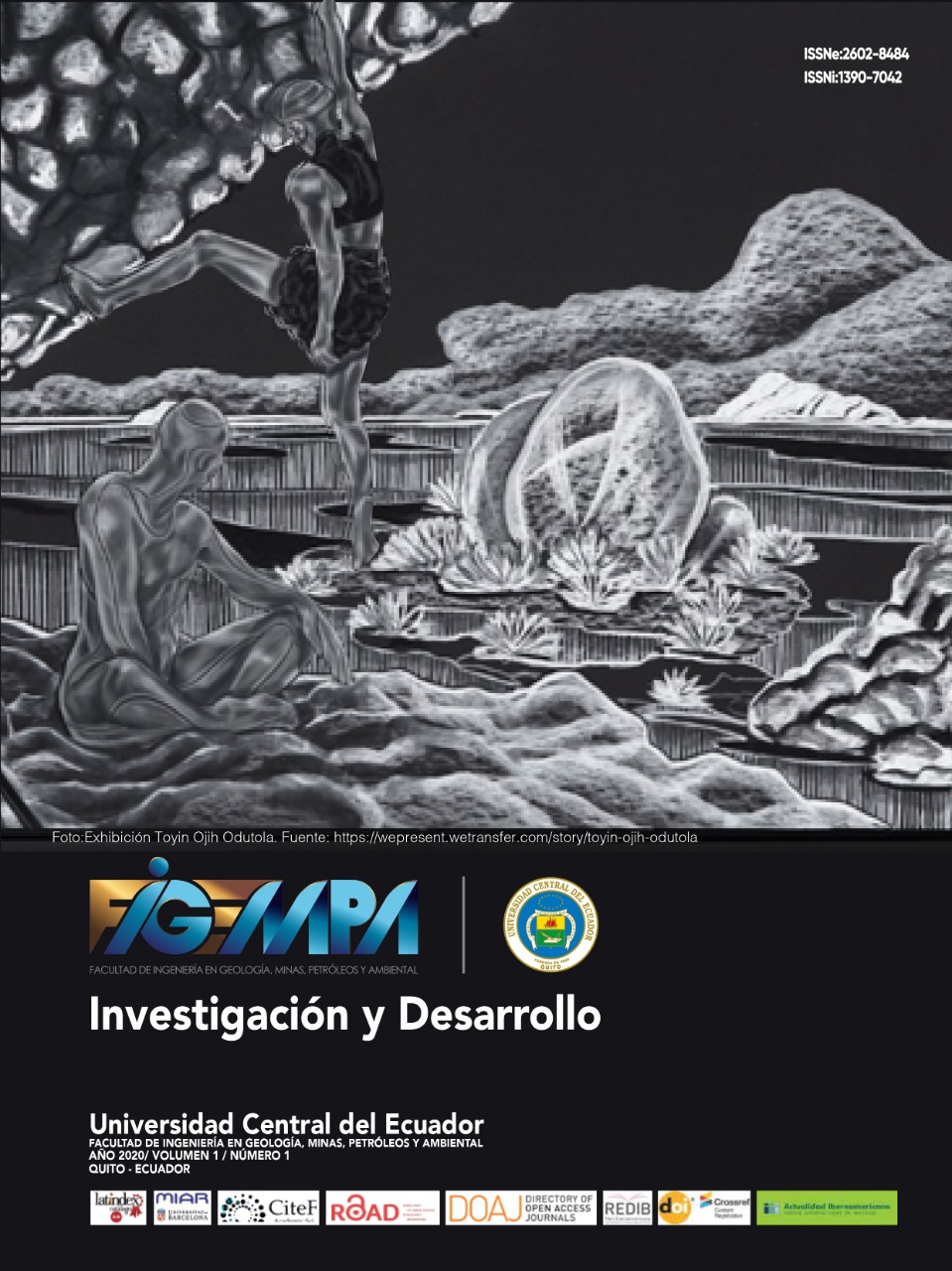Industrial technological development in the urbanization process of the city of Quito
Main Article Content
Abstract
The present investigation has for object to analyze the historical framework of the urban process of Quito, capital city of Ecuador, through a synthesized study of temporalities and technological categories from the field of urban geography, which allows to show the urban fabric, historical landmarks and ideologies, which constituted a new appearance of urban centers, differentiating itself from pre-Columbian towns and villages from local artisan technologies for a development of the city according to its industrialized scientific-technological progress. This investigation, product of a multidisciplinary team, takes as a period of study from the beginnings of colonial industrial technology, product of the founding of the city in 1534, to 2018 with modern cyber technologies. With this objective, documentary analysis and historical method are used, and with a participatory methodology, the cartographic mode is used through unpublished illustrated maps of the technological evolution of the city of Quito.
Downloads
Metrics
Article Details

This work is licensed under a Creative Commons Attribution 4.0 International License.
References
Achig, L. (1983). El proceso urbano de Quito: ensayo de interpretación. Quito, Ecuador: Centro de Investigaciones Ciudad.
Alcaldía Metropolitana de Quito. (2009). Fortalecimiento de Centralidades Urbanas de Quito. Ecuador: Editorial Trama.
Altamirano, W. (2017). Quito: El Belén, capilla del consuelo. Diario La Hora. 13 de agosto de 2017. Recuperado de https://www.lahora.com.ec/noticia/1102092100/quito-el-belen-la-capilla-del-consuelo-
Ares, P. y Risier, J. (2013). Manual de Mapeo Colectivo. Argentina: Tinta Limón
Bacon, F. (2003). On the Idols, the Scientific Study of Nature, and the Reformation of Education. En R. C. Scharff & Dusek, V. (Ed.), Philosophy of Technology: The Technological Condition. An Anthology, pp. 25-37. United Kingdom: Blackwell Publishing
Borchart de Moreno, C. (1998). La Audiencia de Quito: Aspectos económicos y sociales. Siglos XVI y XVIII. Ecuador: Banco Central del Ecuador, Ediciones Abya-Yala.
Bunge, M. (2003). Philosophical Inputs and Outputs of Technology. En R. Scharff (Ed.), Philosophy of Technology. The Technological condition, pp.170-181. United Kingdom: Blackwell Publishing
Carrión, A., Goetschel, A. M. y Sánchez, N. (1997). Breve historia de los servicios en la ciudad de Quito. Quito, Ecuador: Centro de Investigaciones Ciudad.
Carrión, F. (1979). Crisis urbana y organización territorial en Quito. Ecuador: Editorial Colegio de México
Carrión, F. (1987). QUITO Crisis Política y Urbana. Ecuador: Editorial El Conejo.
Carrión, F. y Erazo, J. (2012). La forma urbana de Quito: una historia de centros y periferias. Bulletin de l'Institut français d'études andines, 41 (3), pp. 503-522. DOI: https://doi.org/10.4000/bifea.361
Carrión, F. y Hanley, L. (2015). Regeneración y Revitalización Urbana en las Américas: hacia un estado libre. Ecuador: FLACSO – Ecuador.
Correa, F. y Almeida, R. (2013). A line in the Andes. United States: Applied Research & Design
El Comercio. (2015). Quito Tech, el portal para hacer de Quito una ciudad más digital. El Comercio. Recuperado de https://www.elcomercio.com/guaifai/quito-tech-portal-digital-ciudad.html
Estupiñán, T. (1988). El testamento de don Francisco Atagualpa. Miscelánea histórica ecuatoriana, 1(1), pp.20-21.
Hidalgo, E. (2005). La industria de Quito del siglo XX. Ecuador: FLACSO – Ecuador.
Instituto Geográfico Militar. (1992). Atlas Infográfico de Quito. Ecuador: Imprenta Mariscal El Comercio.
Kingman, E. (2009). Cultura popular, vida cotidiana y modernidad periférica. Quaderns, (25), pp.47-69. Recuperado de https://www.raco.cat/index.php/QuadernsICA/article/viewFile/193723/328575
Kuhn, T. S. (1971). La estructura de las revoluciones científicas. México, F.C.E.
Lafuente, A. y Horrillo, P. (2013). Como hacer un mapeo colectivo. España
Municipio de Quito. (1949). Plan Regulador de Quito. Quito: Municipal.
Municipio de Quito. (1967). Plan Director de Urbanismo de San Francisco de Quito. Quito: Imprenta Municipal.
Paz y Miño, L. (1960). Apuntaciones para una Geografía Urbana de Quito. Quito: CVTLVRA.
Peña, A. (2012). Historia de la construcción de Quito. Quito-Ecuador: Cámara de la construcción
Peralta, E., y Moya, R. (2015). Quito, Patrimonio Cultural de la Humanidad. Ecuador: Ministerio de Relaciones Exteriores
Salgado, G. (1978). Lo que fuimos y lo que somos. Colombia: Editorial Siglo XXI
Winner, L. (1980). Do Artifacts have politics? Daedalus, 109 (1), pp. 121-136. Recuperado de https://www.cc.gatech.edu/~beki/cs4001/Winner.pdf

